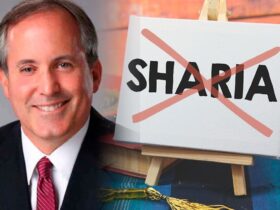Employees at the Department of Health and Human Services began to receive notices of mass layoffs on Tuesday, days after HHS Secretary Robert F. Kennedy Jr. announced that 10,000 people would lose their jobs, including employees working on tobacco use, mental health and workplace safety.
The layoffs are expected to impact 3,500 employees at the Food and Drug Administration and 2,400 employees from the Centers for Disease Control and Prevention — nearly one-fifth of the workforce at both public health divisions, which fall under HHS.
In total, and including roughly 10,000 people who have left over the last few months through early retirement or deferred resignation programs, the overall staff at HHS will fall from 82,000 to around 62,000 — or about a fourth of its workforce.
As news of the cuts spread, employees stood in long lines outside of their offices in Washington, D.C., Maryland, and Georgia, some waiting for hours as security determined whether they could be let in the building or not. In some cases, employees were turned around after being informed that they no longer had a job.
Federal workers wait in line to access to the Mary E. Switzer Memorial Building that houses the US Department of Health and Human Services in Washington, D.C., April 1, 2025.
Roberto Schmidt/AFP via Getty Images
Kevin Caron, a health scientist within the Office on Smoking and Health at the CDC, said the majority of the office was laid off on Tuesday, including his own role in the branch that focused on epidemiology.
The timing is particularly stressful, he said, because his wife is 38 weeks pregnant with the couple’s first child — a girl — and he’ll no longer be able to take the 12 weeks of paternity leave he was approved to take beginning in April.
“It’s absolutely a loss in security, financial security, the ability to be around and be a parent, because I need to look for another job,” Caron said.
The Office on Smoking and Health is described on CDC’s website as “the lead federal agency for comprehensive tobacco prevention and control.” The office distributes money to every U.S. state to prevent and reduce smoking, vaping and using nicotine products, especially among young people.
The office sits within the National Center for Chronic Disease Prevention and Health Promotion at the CDC, which has been hard hit by layoffs at other divisions, too, multiple officials tell ABC News — a surprise to many, given Kennedy’s commitment to ending chronic disease.
“Tobacco is the leading cause of preventable death in the U.S. It’s a serious producer of chronic disease. And so I’m kind of shocked that even though that’s a stated priority, that they would get rid of that kind of work,” Caron said.
At the FDA, tobacco work was also heavily impacted — including the firing of top tobacco regulator Brian King, who had worked to decrease the rates of e-cigarette use by teens.
The impact on tobacco across HHS comes after President Donald Trump as a candidate pledged to “save vaping” and reverse efforts to ban it.
Mitch Zeller, King’s predecessor at the Center for Tobacco Products, told ABC News he learned of King’s exit via conversations with people within the FDA. Zeller said that King was given the option to relocate to a remote western office of the Indian Health Service.
Zeller said that two key offices in the center were “completely rift.”
“If you kneecap the operational function of the center as well as the ability of the center to do forward-looking policy, you’ve really just eviscerated the center and its ability to fulfill its public health mission,” he said.
King did not respond to a request for comment.
Jeff Nesbit, a former FDA official who was instrumental in the FDA’s efforts to begin regulating tobacco, said the cuts will “substantially help the tobacco companies maintain the status quo.”
“These staff cuts to FDA’s tobacco center will allow the industry to continue to sell deadly burned cigarettes for many more years than they would have otherwise; while continuing to talk in vague, general terms about whether vaping and e-cigarettes might some day replace burned cigarettes,” said Nesbit, who was also a senior HHS official under former President Joe Biden.
At the agency that focuses on drug use and mental health, the Substance Abuse and Mental Health Services Administration (SAMHSA), an entire team overseeing a nationwide survey that has been in use since 1971 was cut, Jennifer Hoenig, director of the National Survey on Drug Use and Health, wrote on LinkedIn.
“We are the only national survey focusing specifically on drug use and mental health,” Hoenig wrote.
The office was also working on research about illegally made fentanyl and mental health treatment access, she said.
“I don’t know who will continue on with this work, or if it will,” she said, because so many staff across SAMHSA had been let go.
At a federal office that researches workplace safety, including for firefighters, mine workers, retail workers, truck drivers and factory workers, roughly 90% of the workforce was expected to be laid off, the director of the National Institute for Occupational Safety and Health said on a call with leadership on Monday, a source familiar with the situation said.
NIOSH’s research investigates and researches workplace issues that inform the Occupational Safety and Health Administration, or OSHA, an agency under the Department of Labor that enforces workplace safety and health.
“It does look like the majority or much of the agency is going to be wiped out,” said David Michaels, who led OSHA from 2009 to 2017 and is a professor at the Milken Institute School of Public Health at George Washington University. Michaels said he’d been speaking with many employees at both NIOSH and OSHA.
“It makes OSHA’s job tremendously more difficult if the research of NIOSH disappears,” Michaels said. “There’ll be fewer and less protective standards coming out of OSHA.”











Leave a Reply